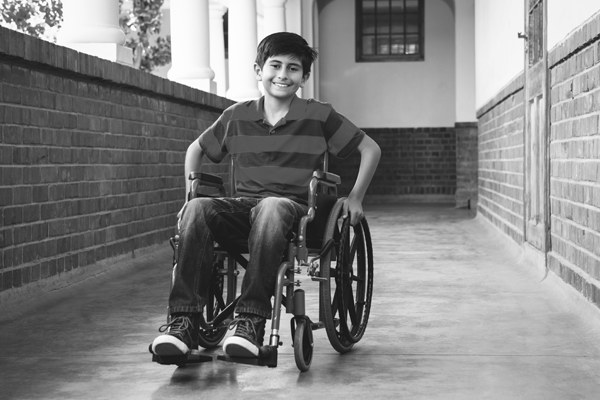Modulator Therapy Improves Lives of Patients With Cystic Fibrosis With Severe Lung Disease
Modulator Therapy Improves Lives of Patients With Cystic Fibrosis With Severe Lung Disease https://pediatricsnationwide.org/wp-content/themes/corpus/images/empty/thumbnail.jpg 150 150 Mary Bates, PhD Mary Bates, PhD https://secure.gravatar.com/avatar/c6233ca2b7754ab7c4c820e14eb518c8?s=96&d=mm&r=g- October 30, 2023
- Mary Bates, PhD
Patients receiving ETI on a compassionate use basis experienced substantial clinical improvement.
The development of cystic fibrosis transmembrane conductance regulator (CFTR) modulator drugs, most recently elexacaftor/tezacaftor/ivacaftor (ETI), has transformed the treatment of patients with cystic fibrosis. A new study from researchers at Nationwide Children’s Hospital shows that ETI therapy has the potential to change even the lives of patients with advanced lung disease.
In 2018-2019, clinical trials of ETI conducted in patients with cystic fibrosis with stable disease resulted in significant improvements in clinical symptoms and quality of life. The results were rapid and dramatic, according to lead study author Karen McCoy, MD, chief of the Division of Pulmonary Medicine at Nationwide Children’s.
“We could tell which patients received the medication, even though the trial was blind, in some cases within hours of the first dose,” she says.
Though the results of the clinical trial were striking, it would take several months for ETI to receive final approval from the US Food and Drug Administration (FDA). McCoy and her colleagues believed some of their patients with cystic fibrosis with severe lung disease might also benefit from the therapy but had a high risk of dying before FDA approval of the drug.
“We spent the better part of three months doing these individual requests to the FDA to approve this drug on a compassionate use basis, one person at a time,” says Dr. McCoy. “And, oh boy, did it ever pay off.”
The researchers initiated ETI therapy with 18 high-risk patients with cystic fibrosis between July and September 2019 and followed their clinical outcomes for two years. They report that the therapy resulted in fewer respiratory symptoms, improved nutrition, and quality of life. Most of the patients also had sustained improvements in pulmonary function. Patients in this cohort went back to school to complete higher degrees, obtained new jobs, stopped the use of supplemental oxygen and ventilators, and gave birth to children.
“They felt better, gained weight, none required a lung transplantation, and all of them are still alive now,” says Dr. McCoy, who is also a professor of pediatrics at The Ohio State University College of Medicine.
Currently, most cystic fibrosis centers in the US have nearly everyone who is eligible on ETI therapy. At Nationwide Children’s, this amounts to about 350 patients.
While ETI is life-changing for many patients with cystic fibrosis, there are certain disease-causing genetic mutations that do not respond to it. In addition, the medicine is not available in many places around the world and can be extraordinarily expensive.
Dr. McCoy says that a safe, lasting genetic cure that works in everyone with cystic fibrosis is the ultimate goal.
“I don’t think we’re near there. The drug is very expensive in the United States and may not be available in other countries at all,” she says. “But if we tried to figure out where we’d be right now 25 years ago, we would still be thinking about incremental changes in lifespan, and not about the kinds of lives these patients are now able to live.”
Reference:
McCoy KS, Blind J, Johnson T, Olson P, Raterman L, Bai S, Eisner M, Sheikh SI, Druhan S, Young C, Pasley K. Clinical change 2 years from start of elexacaftor-tezacaftor-ivacaftor in severe cystic fibrosis. Pediatr Pulmonol. 2023 Apr;58(4):1178-1184. doi: 10.1002/ppul.26318. Epub 2023 Jan 27.
About the author
Mary a freelance science writer and blogger based in Boston. Her favorite topics include biology, psychology, neuroscience, ecology, and animal behavior. She has a BA in Biology-Psychology with a minor in English from Skidmore College in Saratoga Springs, NY, and a PhD from Brown University, where she researched bat echolocation and bullfrog chorusing.
-
Mary Bates, PhDhttps://pediatricsnationwide.org/author/mary-bates-phd/December 27, 2016
-
Mary Bates, PhDhttps://pediatricsnationwide.org/author/mary-bates-phd/
-
Mary Bates, PhDhttps://pediatricsnationwide.org/author/mary-bates-phd/
-
Mary Bates, PhDhttps://pediatricsnationwide.org/author/mary-bates-phd/






